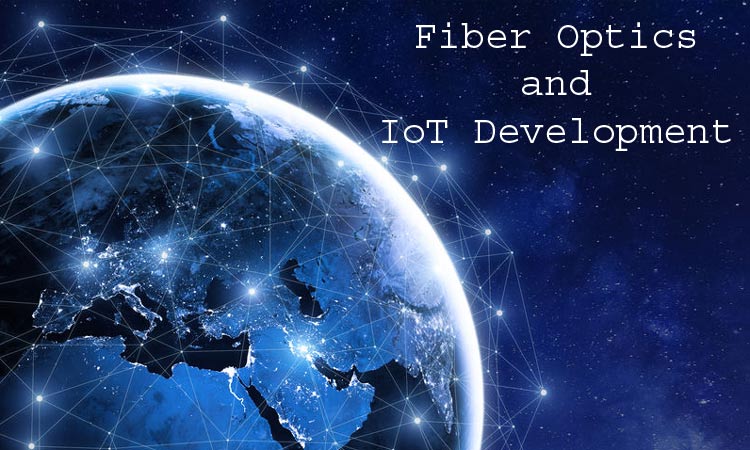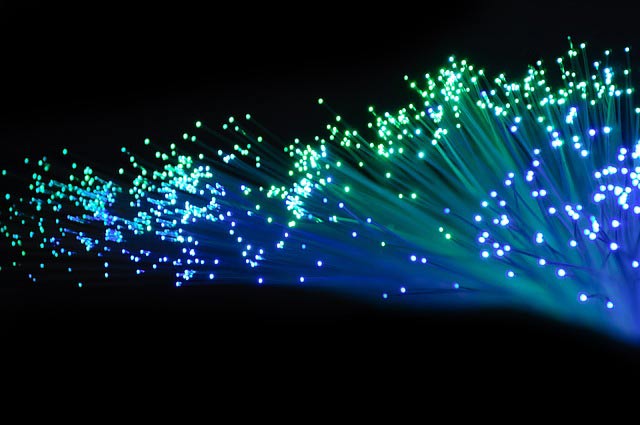
Many industries are able to fashion their products to align with what is the Industrial Revolution 4.0. One of the key players of this shift is the Internet of Things sector that is growing at dizzying heights even as we speak. However, the IoT sector has insurmountable data and network capacity that is proving to be a tad bit too complex for conventional connections. The wireless ability can only take the products so far, thus limiting the potential of which industries can automate. Imagine the improvement in work functioning and quality output with which companies would be able to operate if they were not hindered by the limited possibilities of a wireless - beacon-based connection. The communication medium should be fast and reliable to talk with Iot clouds platforms.
To resolve, we can turn to Fiber Optics that have the ability to drive the magnanimous data and networking requirement of the Internet of Things. IoT offers new opportunities for the fiber and optic measurement market which hasn’t undergone a substantial change in the last quarter-century.

The Role of Optic Fibers in IoT
An optical fiber cable receives data in the form of a light beam which travels across its entire length without subjecting to any data loss. Moreover, by replacing the bulky equipment, the refined fiber network can reduce the cost incurred in logistics, space taken up, and the weight of the material. This ease of application simplifies data traction, analysis of the existing data while enhancing the security parameters and relevant product automation.
In fact, the Electronic Power Board of Chattanooga, Tennessee, credited with building the United States’ most famous optic fiber networks elaborated upon the fact that the nation’s first gigabit-speed municipal broadband network was built in the hindsight of supporting the IoT applications.
Optical fiber technology has found its niche in the fields of energy, healthcare, technology, healthcare, aerospace and so on. In comparison to the traditional transmission, optic fiber gives a better deal in the form of easy remote transmission, diverse capability, multi-faceted, ease of networking, varied parameter and many more.
We can consider an IoT device which cannot be under immense pressure for regular domestic purposes. However, combine it with scaling requirements of 4K streaming and video conferencing, there is an increased need for enhancing the bandwidth girth. It is interesting to note that with the progressing demand of 4k streaming, we might leap into the 8k dimension which would require even more bandwidth. This will change the paradigms of virtual connection and interaction which will further open up the demand for the optical fiber network in the IoT domain as well as improve its connectivity which still needs refinement.
Reiterating on its properties, optical fiber communication network is able to carry a greater bandwidth of IoT applications. Multiple fiber layers are embedded at the base of the products to offer a seamless collaboration between the sensor and the receiver. For instance, in the concept of M2M (Machine-to-Machine) such technology can be leveraged to cater to the data request in one equipment, to be transferred to the other bound by encryption to make the switch safe and seamless.
IoT is divided into three layers, the application layer, the network layer, and the perception layer. In the perception layer, technologies like RFID, middleware, wireless communication, and embedded systems are at play, while in the application layer, data storage, sharing, mining, and computing are at play.
In the network layer, M2M, cognitive radio technology and network context-aware technology are playing the part. In the perception layer, the technology focuses on data collection, and short communication, which require the optimization of optic fibers. These fibers can help detect data and transmit them easily to convert them into electrical signals or other procedural culmination.
Industrial Influx
The Oil & Gas industry recently underwent a paradigm shift where it changed its conventional infrastructure to support the ever-growing demand. IoT is at the forefront and boosting this is Optic Fibers improving operational accuracy and performance. Since the industry heavily relies on the pipeline module, which is prone to implications of environmental factors as well as mechanical disruption.
In order to avoid the spillage, fiber optics can sense the malady in the pipes in real-time and predict the upcoming situations. This improves quality of monitoring and shelf-life of the conduits which are otherwise a heady expense. Not to mention, it also helps save the unnecessary disposal of crude oil which can cost an economy millions of dollars. Manufacturing industry stands to gain a chance benefit by infusing optic fiber network to control its IoT and optimize the resources as well as slashing down the loss of life, capital and resources.
Consumer IoT
Consumer IoT comprises of home automation which has a lot of scopes to empower the optic fiber network. The connectivity and communication across machines for e-health, e-security, and home energy management can be easily improved by deploying optic fibers. For instance, if we consider healthcare management, this optic fiber connection can easily transmit data from the consumer to the health experts (which can be in the form of an analysis or emergency situation) in real-time and make quick decisions as the situation calls for it.
Summarized Benefits
- Rapid data delivery
- Reduced cost
- Improved efficiency
- High capital but high longevity
- Conducts only light and therefore, cannot inflict damage
- Predictive analysis
- Long term benefit
- Improved security
- Asset tracking
Future Ideations
The future for the IoT- Optic Fiber network seems to be bright and a vision that is achievable. This can be reinforced by Gartner’s report where more homes will be relying on the annotation of smart devices while raising demands for seamless data transmission across larger distances. However, due to the high cost of optic fibers, we do have to have a pragmatic eye on the expenses that might arise due to the increased deployment of these fibers.





